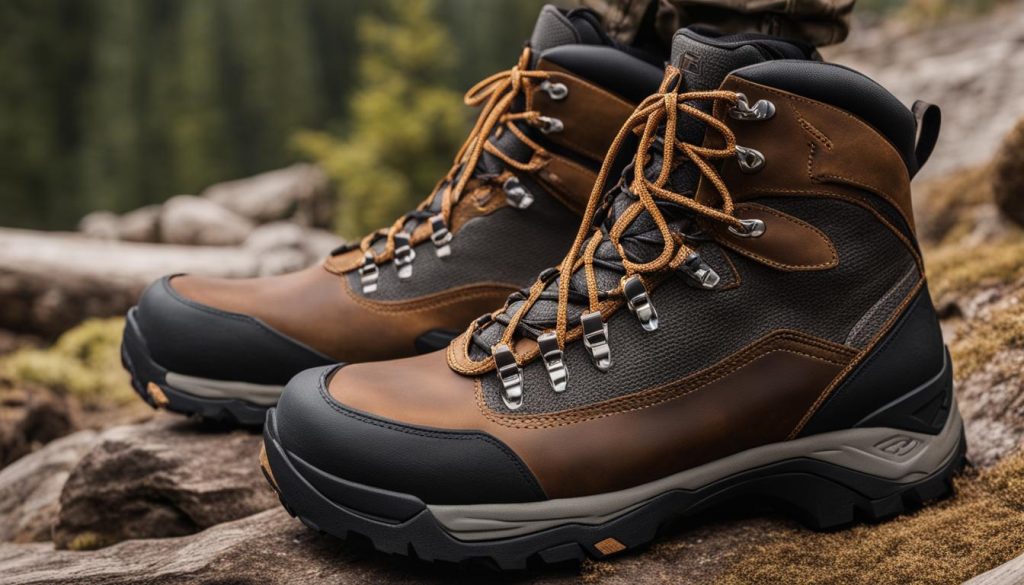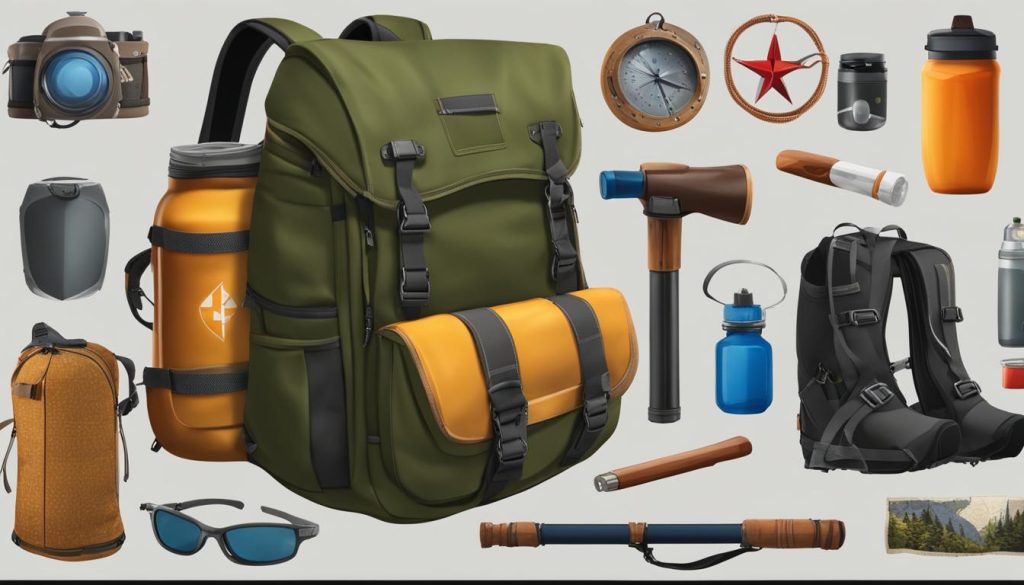Choosing the right hiking shoes is crucial for a comfortable and enjoyable hiking experience. Whether you’re a seasoned hiker or just starting out, selecting the perfect pair of hiking shoes can make all the difference in your outdoor adventures.
When it comes to choosing hiking shoes, there are several factors to consider. First, think about the type of hiking you’ll be doing. Will you be tackling easy trails or rugged and technical terrain? Different types of terrain require different features in hiking shoes.
Next, consider the weight of your backpack. If you’ll be carrying a heavy load, you’ll want shoes that provide the necessary support and stability. On the other hand, if you’ll be going on shorter day hikes with a light backpack, you may opt for a lighter and more flexible shoe.
The length and pace of your hike should also be taken into account. If you’ll be embarking on long-distance hikes or moving at a faster pace, you might consider shoes with added cushioning and shock absorption for extra comfort.
Lastly, don’t forget about your personal preferences. Some hikers prefer high-cut shoes for added ankle support, while others prefer low-cut shoes for more freedom of movement. Take into consideration your hiking level, fitness level, and what feels most comfortable to you.
Before making a purchase, it’s always a good idea to try on the shoes and ensure a proper fit. Pay attention to how the shoes feel on your feet and walk around in them to get a sense of their comfort and support. Remember, everyone’s feet are different, so what works for someone else may not work for you.
With these tips in mind, you’ll be well-equipped to choose the right hiking shoes for your next adventure!
Key Takeaways:
- Consider the type of hiking and terrain you’ll encounter when choosing hiking shoes.
- Take into account the weight of your backpack and the length and pace of your hike.
- Different types of terrain require different features in hiking shoes.
- Fit is crucial, so make sure to try on the shoes and ensure they provide the necessary comfort and support.
- Personal preferences, such as ankle support and freedom of movement, should also be considered.
Types of Hiking Footwear
When it comes to hiking, having the right footwear is crucial to ensure comfort, stability, and protection. There are three main types of hiking footwear to consider: hiking boots, trail runners, and hiking shoes. Each type has its own benefits and is suitable for different hiking conditions and preferences.
Hiking Boots: Hiking boots are the most traditional and versatile option. They are designed to provide excellent ankle support and protection, making them ideal for rugged and challenging terrains. Hiking boots are also suitable for carrying heavy backpacks, as they offer enhanced stability and cushioning.
Trail Runners: Trail runners are lightweight and offer a more athletic feel compared to hiking boots. They are designed for on-trail use and provide stability and support for moderate terrains. Trail runners are a great choice for those who prioritize lightness and flexibility, but they may not offer as much durability or protection as hiking boots.
Hiking Shoes: Hiking shoes are low-cut and strike a balance between weight and support. They are suitable for day hikes and light backpacking on well-maintained trails. Hiking shoes provide good traction and are more breathable compared to hiking boots, making them comfortable for warm weather hikes.
Hiking Footwear Comparison
| Hiking Boots | Trail Runners | Hiking Shoes | |
|---|---|---|---|
| Support | High | Medium | Medium |
| Durability | High | Medium | Medium |
| Ankle Support | Yes | No | No |
| Weight | Heavy | Light | Light |
| Terrain | Rough and rugged | Moderate | Well-maintained trails |
Choosing the right type of hiking footwear depends on your specific hiking needs and preferences. If you plan on tackling challenging terrains and carrying heavy loads, hiking boots would be the best option. For moderate terrains and a lighter feel, trail runners can be a good choice. And if you’ll be hiking on well-maintained trails, hiking shoes would be a comfortable and lightweight option.
Remember, the type of hiking footwear you choose should provide the necessary support, protection, and comfort for your specific hiking adventures. Make sure to try on different options and consider factors such as fit, durability, and the terrain you’ll be exploring. With the right hiking footwear, you’ll be ready to hit the trails with confidence!
Hiking Boot Components and Fit
When it comes to hiking boots, understanding their components and finding the right fit is essential for a comfortable and enjoyable hiking experience. Hiking boots are made up of various parts that work together to provide support, protection, and traction on the trails. Let’s take a closer look at the different components that make up a hiking boot.
Hiking Boot Components:
| Component | Description |
|---|---|
| Hiking Boot Uppers | The upper portion of the boot that covers the foot and ankle. It can be made of full-grain leather or synthetic materials, each offering different levels of durability, breathability, and water resistance. |
| Hiking Boot Midsoles | The layer of material between the upper and the outsole that provides cushioning, shock absorption, and stability. Different types of midsoles offer varying levels of stiffness and flexibility to suit different hiking terrains and personal preferences. |
| Hiking Boot Internal Support | Internal components, such as shanks and plates, that provide stability and support to the foot. Shanks are typically located in the midsole and offer underfoot protection and torsional rigidity, while plates protect against sharp objects. |
| Hiking Boot Outsoles | The bottom layer of the boot that comes into contact with the ground. Outsoles are designed to provide traction, durability, and grip on different surfaces, such as rocky terrain, muddy trails, or slippery slopes. |
Aside from understanding the components, finding the right fit is crucial for comfort and performance on the trails. A proper fit ensures that the boot supports your foot and ankle while allowing room for natural movement and preventing discomfort or blisters. Here are a few tips for finding the right fit:
- Try on hiking boots at the end of the day when your feet are slightly swollen, similar to how they would be during a hike.
- Wear the type of socks you would typically wear when hiking to get an accurate feel for the boot.
- Ensure that the boot is snug but not too tight, allowing for wiggle room for your toes.
- Walk around in the boots to test for any areas of discomfort or rubbing.
- Consider the volume of the boot to accommodate the shape and size of your feet.
Remember, finding the right hiking boot components and fit can make a significant difference in your hiking experience. Take the time to understand the different components and try on various boots to find the perfect fit for your adventures on the trails.

Conclusion
Choosing the right hiking shoes is crucial for a comfortable and enjoyable hiking experience. By considering the type of hiking, terrain, backpack weight, and hike length, you can select the perfect pair of hiking shoes tailored to your needs.
When it comes to choosing hiking footwear, there are three main types to consider: hiking boots, trail runners, and hiking shoes. Each type offers different levels of support and protection, so make sure to choose the one that suits your hiking style and requirements.
Remember to pay attention to the components and fit of hiking boots. Materials like full-grain leather or synthetic uppers, cushioned midsoles, internal support features, and durable outsoles all contribute to the overall comfort and functionality of the boots. Always try on boots at the end of the day, wear suitable socks, and take the time to walk around in them to ensure a proper fit.
With the right hiking shoes, you can confidently step into your next hiking adventure, knowing that your feet will be comfortable and supported throughout the journey. So, take the time to choose the right hiking shoes for you and get ready to explore the great outdoors.
FAQ
How do I choose the right hiking shoes?
When selecting hiking shoes, consider the type of hiking you will be doing, the terrain you will encounter, the weight of your backpack, and the length and pace of your hike. It’s also important to consider your hiking level, fitness level, and personal preferences when choosing hiking shoes. Finally, make sure to try on the shoes and ensure a proper fit before purchasing.
What are the different types of hiking footwear?
The three main types of hiking footwear are hiking boots, trail runners, and hiking shoes. Hiking boots are suitable for rough terrain and heavy backpacks, providing ankle support and protection. Trail runners are lightweight and provide stability and support for on-trail use. Hiking shoes are low-cut and offer a balance between weight and support, making them ideal for day hikes and light backpacking.
What are the components of hiking boots and how should they fit?
Hiking boots are composed of various components, such as the upper (made from materials like full-grain leather or synthetic materials), midsole (providing cushioning and stiffness), internal support (including shanks and plates for stability), and outsoles (providing traction and durability). It’s important to consider the fit of hiking boots, ensuring they are snug but not too tight, allowing room for toe movement, and offering proper support and volume for your feet. Trying on boots at the end of the day, wearing appropriate socks, and spending time walking in the boots can help determine the right fit.
Why is choosing the right hiking shoes important?
Choosing the right hiking shoes is essential for a comfortable and enjoyable hiking experience. The right shoes will provide the necessary support and protection for your feet, allowing you to navigate different terrains and carry the weight of your backpack without discomfort. With the right hiking shoes, you can step confidently and enjoy your next hiking adventure.



